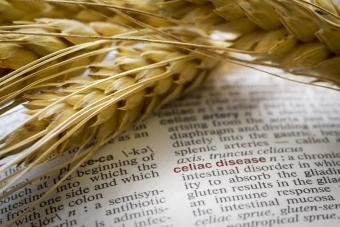
Celiac disease in the United States might be more common than you think. Estimates suggest the rate in the United States is about 1 percent, but there is some debate as to that number due to undiagnosed or misdiagnosed cases.
Number of Celiacs in the U.S.
The number of people with celiac disease in the U.S. varies by source.
- The National Celiac Association says 1 in 100 people have celiac disease but over 75 percent are inaccurately diagnosed.
- The National Foundation for Celiac Awareness says 1 about percent of the U.S. population (1 in 133 Americans, or about 3.19 million people) has celiac disease, but 83 percent (2.6 million people) of people with the condition aren't diagnosed.
- The National Institute of Diabetes and Digestive and Kidney Diseases says about 1 in 141 Americans (about 2.3 million people) has celiac disease, and most of those people don't know they have it.
What About Gluten Sensitivity?
Gluten sensitivity means you experience negative side effects from eating gluten (similar to celiac disease symptoms) but test negative for celiac disease. The Celiac Disease Foundation says that up to 18 million Americans (5.6 percent of the population) may have gluten sensitivity (requiring a gluten-free diet) even though they don't test positive for celiac disease.
Is Celiac Disease on the Rise?
According to a 2016 paper in Mayo Clinic Proceedings, the prevalence of celiac disease has remained fairly stable from years 2009 to 2014. However, researchers who conducted the analysis report that more undiagnosed people with celiac disease are now being diagnosed, and more Americans without celiac disease have adopted gluten-free diets.
What Increases Your Risk?
While anyone can develop celiac disease, some Americans have higher risks for developing it. According to the U.S. News and World Report:
- If a first-degree family member has celiac disease, your risk increases to 1 in 22.
- About 20 percent of celiac patients are over age 60.
- Women are slightly more likely than men to have celiac disease.
- A 2015 study in Digestive Diseases and Sciences says the prevalence of celiac disease is 4 to 8 times higher in non-Hispanic white Americans than in other races.
When to Get Tested
The best way to know if you have celiac disease is to get tested, especially if you're exhibiting symptoms. Likewise, if you have an increased risk of developing the disease as noted above, testing may be beneficial.







